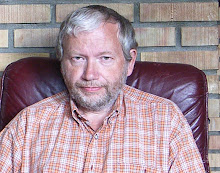Continued today 8.30 this morning with suction straws through lids and taped upper end of each straw. The opening around each straw was sealed by tape. I did a smaller timing error in first trial, so I did a second trial at 9.00. The cup with yellow straw contained FARRIS+ (bottled water plus CO2 plus lemon drops), the cup with red straw contained FARRIS (bottled water plus CO2) and the cup with blue straw contained tap water - every liquid at room temperature at 15 degree Celsius at both the start and the end of the experiment. In each cup I placed an ice cube of similar size before closing the lids and at the same time started the timer at 12 minutes.
At 12, 10, 8, 6, 4 and 2 minutes left on timer, I did a stirring of each cup by using the straws while I counted fast to 12: I started with the yellow straw, then the red and then the blue in the first round; in the second round I started with the red, then the blue and then the yellow; and in the third and final round I started with the blue, then the yellow and then the red. No favorish straw and each round lasted about ten seconds of stirring, so a total of 30 seconds of stirring of each 2 minutes.
When I opened the lids after 12 minutes all ice chips left looked the same in shape and size - and they were all bigger than the ice chips from the first day of experiment (without stirring and at the same duration). The ice chips now were regular, oblong, rectangularish in shape with rounded corners.
Leaving the lids opened I observed that the ice chip in the cup with tap water melted faster and began to reach a more quadratic shape - much like yesterday, and similar the ice chip in the two other cups got a more pointed one end - also like yesterday. But to my surprise the ice chip in the cup marked FARRIS lasted about one minute more than the ice chip in the cup marked FARRIS+. The first trial today also showed that the ice chip in FARRIS cup lasted longer than the ice chip in FARRIS+ cup.
Not until 23 minutes the ice cube in the cup marked WATER was all gone, and 5 more minutes later the ice cube in FARRIS+ cup was all melted, while the ice cube in FARRIS cup lasted a total of 29 minutes!
What does this mean? I think, by stirring, we avoid there beeing segregated warm and cold parts of liquids, so the ice doesn't get so much effected by warm pulses that might suddenly burst out from the warm parts when the ice melt and bring colder currents toward the warm parts (that try to "get away"). The warm parts are of less density than the colder parts, so some warm bursts will reach the surface where the ice cube float (in the case of no stirring). No stirring means the colder currents seek down to the bottom of the cups and we are left with warmer upper parts distant from the floating ice cube, so when the ice still continue to melt and the denser cold currents reach the warmer upper parts, warm parts will be forced to reach the ice cube in an attempt to "get away" - then the melting of ice is faster and still faster.
It seems that the ice chip in FARRIS+ cup melted faster than the ice chip in FARRIS cup due to the probably enhanced force by traces of lemon to stop the currents beeing more evenly distributed a while after I ended stirring, while that was not the case with FARRIS cup where there probably was a slower segregation of colder and warmer parts.
By stirring a little we avoid the segregation and get more evenly distribution of heat (and some is of course lost out of the cup - but I think I minimized that in my experiment). So by transferring this result to "the real world" we see the importance of mixed variety of the environment if we want the world to be regular with stable climate and with little bursts of really bad weather (both cool or hot) and with the glaciers and polar ice cups in same condition. It's not so much about the content of CO2 and aerosols in air and seas if we terraform the Earth to get rid of excessive heat and distribute heat much more evenly than before. Otherwise, the increasing of CO2 and aerosols will be our doom... wake up!
Subscribe to:
Post Comments (Atom)



No comments:
Post a Comment